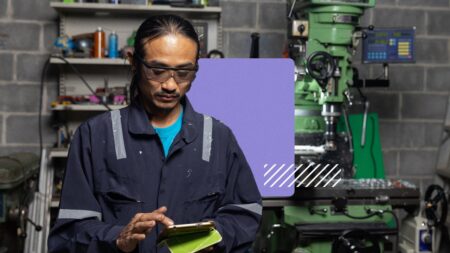Patti Johnson is the founder of PeopleResults, on the Pariveda Solutions Board of Directors, author of Make Waves, and podcast host.
By design, a change is new and different. You haven’t been in this exact situation before. Knowing this reality can transform how you lead and make decisions. Leaders who want to be “right” and have all the answers can feel uncertain when significant changes are underway. Many behaviors that got you where you are now become a liability. Knowing all the answers, detailed long-term planning and relying on consistency aren’t always possible in transformational change.
But you can still make wise decisions even when there is uncertainty and ambiguity. Start by exploring these questions to push your normal approach.
What do you need to know or better understand?
If you haven’t experienced this change before, you can’t already know everything you need to know. Leaders can have an Achilles’ heel by applying the perfect decision from two years ago to today’s problems—all based on a desire to show they know. It’s essential to understand what you need to know now in this new situation. Then, assess what you need to learn and what information others can bring.
For example, a recent client decided to significantly expand globally so that the U.S. business would become a much smaller part of their total business. Yet, their entire leadership team was in the U.S. with limited global experience. Their knowledge gap required a rapid, comprehensive plan to increase their knowledge and add new talent to be successful in moving into new geographies and cultures.
Who and what should I listen to and learn from?
This question will guide you in addressing your knowledge gaps. Will this knowledge come from an expert on your team or an external expert? Does the expertise even exist in your team or organization today? Can a human bring this knowledge, or will it come via external data or information?
Also, listening is essential for obtaining new information and insights. Change leaders must power up their listening skills to learn—and understand their team’s input. Listening more is highly valuable in periods of high change because it’s how you get smarter and engage others.
What must be decided now?
Not everything must be decided now or before the change begins. A learning mindset gives you the flexibility to adapt as you learn more—and you will. Be strategic about those decisions to determine how far out you can see. Don’t kick decisions down the road, but make decisions on the time horizon with clarity. Any change means shorter burst decisions and agile planning rather than a fixed year-long plan that’s out of date in two months.
Consider a mindset that adapts to change: This is how we do this work or process now. When we find a better way—we’ll change it. This mindset applies whether it’s three months from now or a year. Being agile doesn’t mean you fly by the seat of your pants and have no plan. But this approach defines how you do the work now—and sets the expectation that, at some point, it will change.
What are my options?
Looking at all available options (even if they seem unworkable at first) is very powerful in making any decision. An option that isn’t desirable in isolation may be the best option when contrasted with the other choices. When looking at options, be wide open and include options that seem unworkable at first as they may spur a variation that will. Wise decisions are made by knowing your choices and choosing the one that most meets your objectives—even if it is not ideal.
I watched the CEO of a global food and beverage company completely diffuse a tense situation caused by an unpopular decision that impacted employees. She explained each option that their leadership considered and the pros and cons of each. This transparent communication of options added new clarity that, while the decision wasn’t ideal, it was clearly the best choice for employees.
Are any options irreversible?
Knowing how fixed a decision will be determines whether you can have an agile plan. Most decisions can be adapted or even reversed, but not all. For example, given the financial and organizational investment, the decision to acquire a new business—or to be acquired—is tough to reverse later. However, a new product may be easy to move forward with and adjust based on what the market tells you.
Irreversible decisions require more certainty, data, and insights, and often time to feel confident moving forward.
What must I decide versus others?
Change happens through a coalition of invested team members. A command-and-control, “all decisions come to me” system will likely be too slow, often made without the proper knowledge, and make it “your” change, not “our” change. It’s a long way of saying, it will never work.
In times of high change, leaders can’t rely solely on internal processes, policies or rules to make decisions. Everything is changing too fast. Instead, leaders need to understand the goal and strategy so they can make the best decision more quickly. There is rarely time to gain complete consensus or check with multiple people before deciding to move. Involve and educate others on the goals and strategy upfront so they can internalize the desired outcomes and translate them into their work. And you won’t have to make all of the decisions!
What do we do now?
You’ve learned what you and your team need to know, determined the decisions needed now, assessed your options, and evaluated irreversible decisions. You’ve also considered what decisions you must make versus others. Make your decision, and be willing to adapt and refresh as you learn more. Change has a funny way of always bringing new information and a different twist than what you knew even yesterday.
Forbes Business Council is the foremost growth and networking organization for business owners and leaders. Do I qualify?
Read the full article here
















